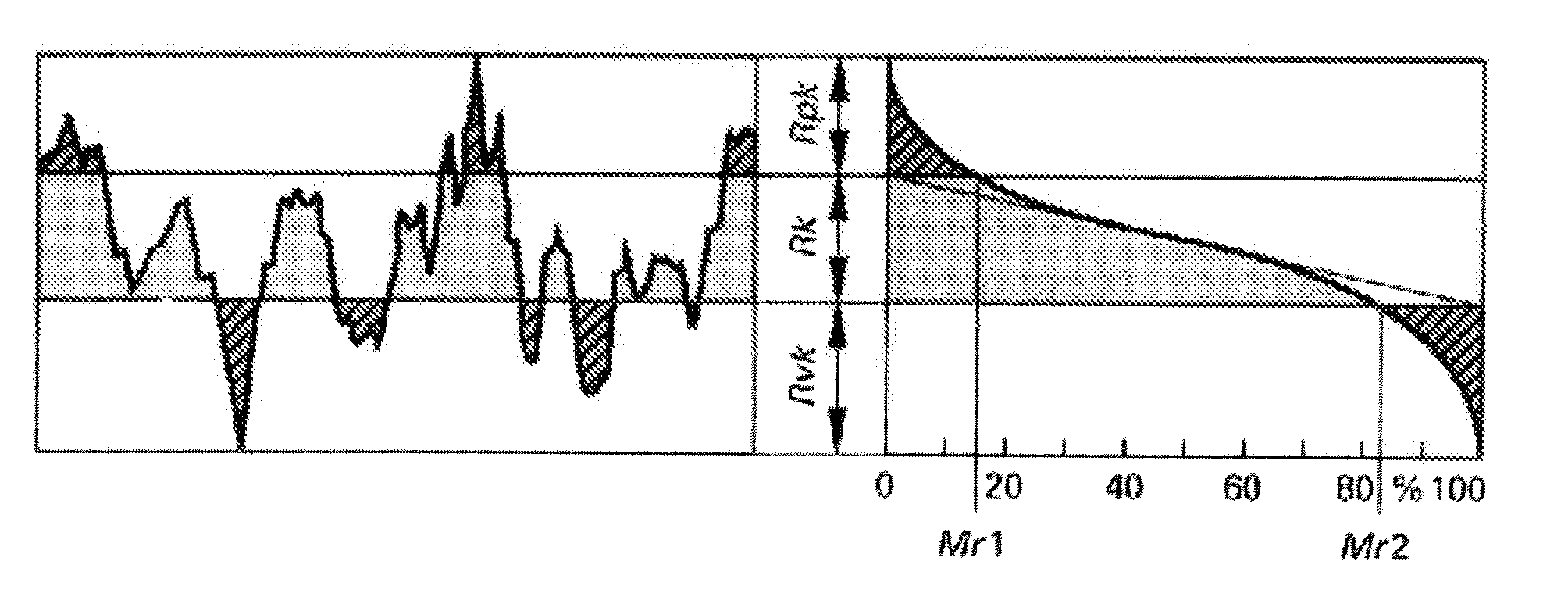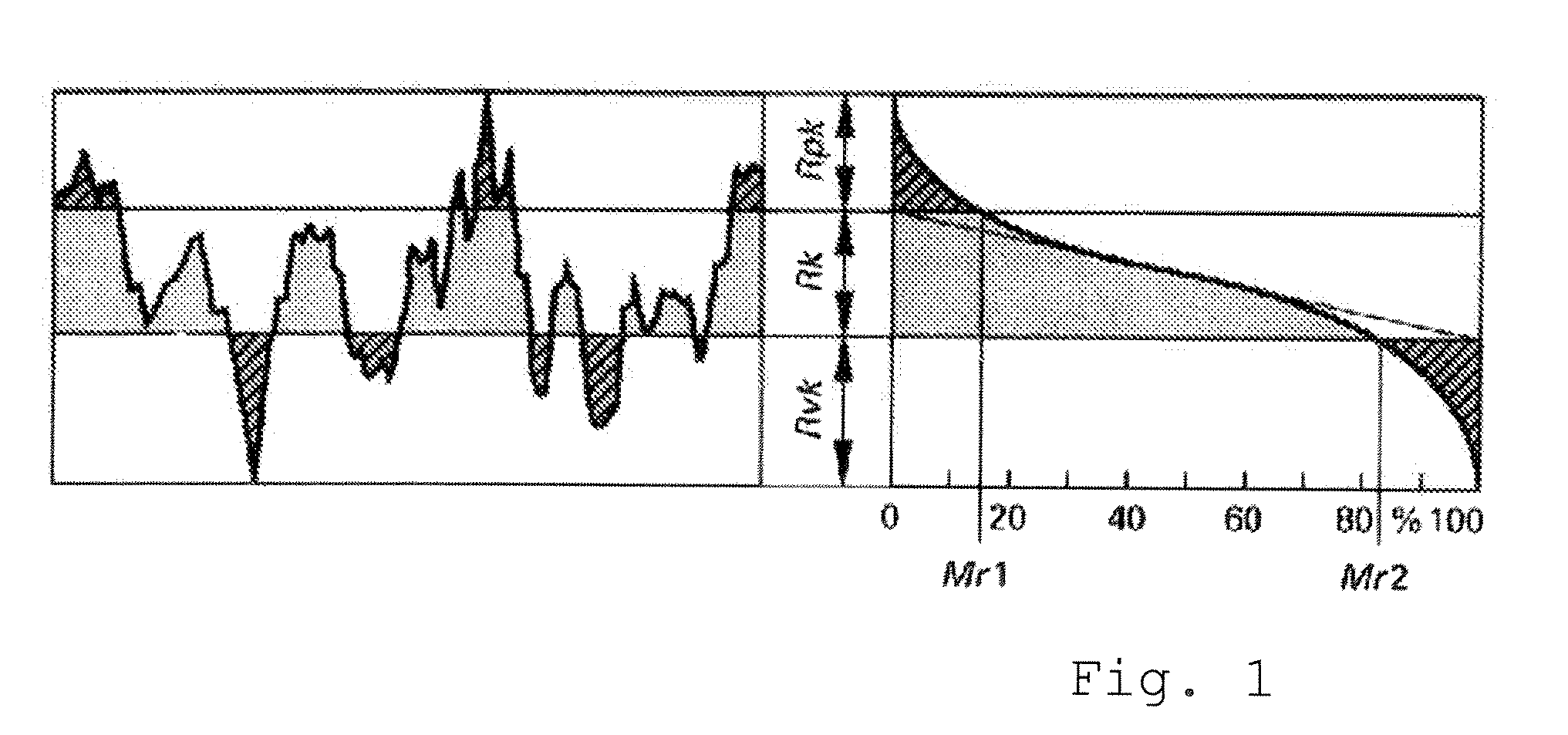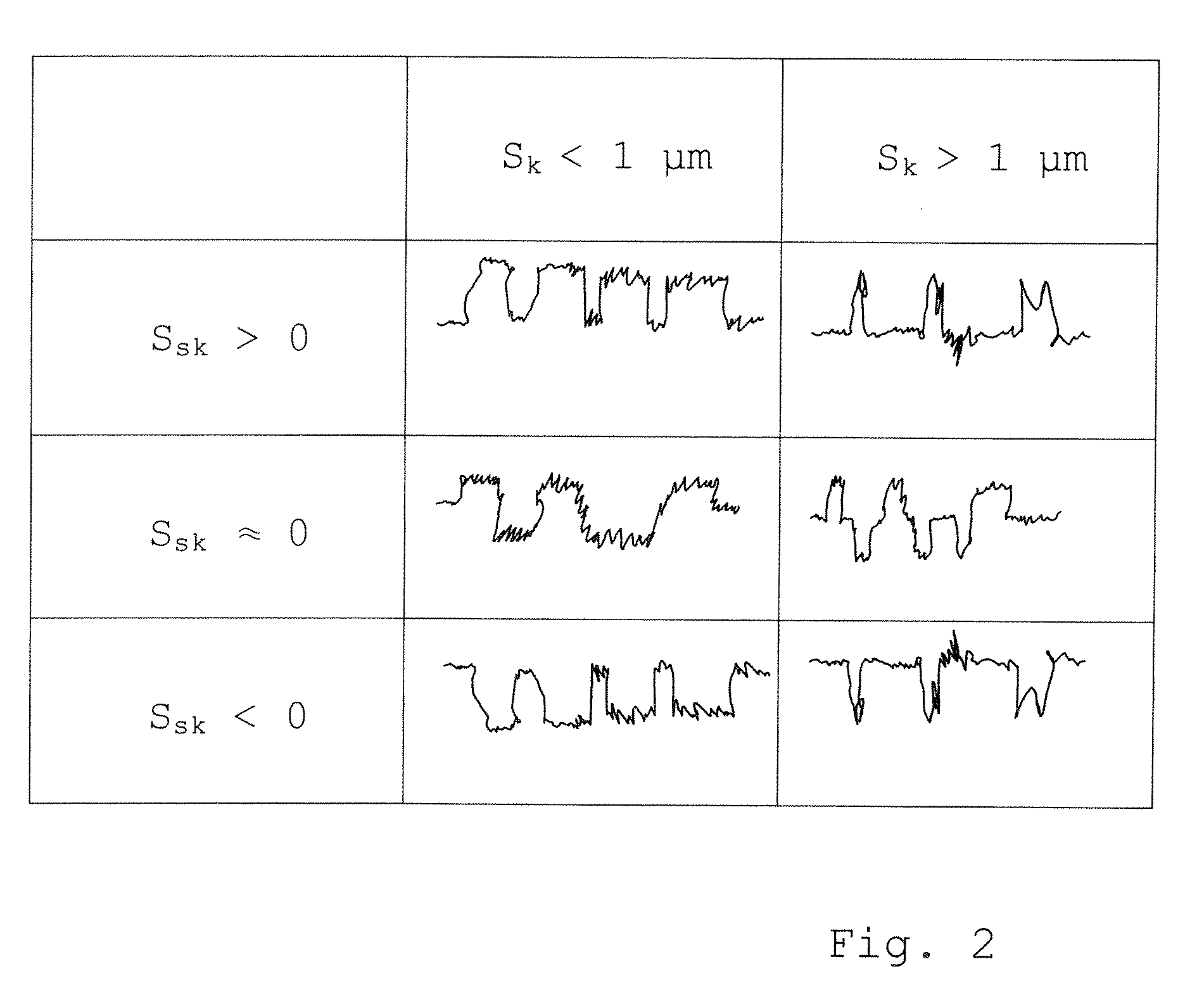Process for providing a topography to the surface of a dental implant
a dental implant and topography technology, applied in dental implants, dental prosthetics, dental preparations, etc., can solve the problems of limited use of ceramic materials for dental implants, mismatch with natural tooth color, and dark color of dental implants, and achieve high osteointegration ceramic dental implants, the invention of the present invention, and the effect of fast, efficient and industrially applicabl
- Summary
- Abstract
- Description
- Claims
- Application Information
AI Technical Summary
Benefits of technology
Problems solved by technology
Method used
Image
Examples
examples
1. Etching of a Surface Made of Yttria-Stabilized Zirconia Ceramic
[0092]For Examples 1 to 11, densely sintered bodies made of yttria-stabilized zirconia ceramic as described by Burger, W. et al, New Y-TZP powders for medical grade zirconia. J Mater. Sci. Mater. Med. 1997, 8 (2), 113-118, and having the shape of a disc with a diameter of 15 mm and a thickness of 2 mm are prepared by low pressure injection molding and subsequent hot isostatic pressing. The material falls within the definition of ASTM F 1873 and ISO 13356 and is further specified by an average grain size from about 0.1 μm to about 0.3 μm.
[0093]For preparing the bodies, casting molds are used which optionally have been treated by erosion techniques to obtain a macroscopic roughness (or “macroroughness”) on the inner surface of the mold. Depending on the erosion parameters used, a pronounced or a non-pronounced macroroughness is, thus, provided to the surface of the body. Alternatively, a pronounced macroroughness can al...
PUM
| Property | Measurement | Unit |
|---|---|---|
| temperature | aaaaa | aaaaa |
| grain size | aaaaa | aaaaa |
| healing time | aaaaa | aaaaa |
Abstract
Description
Claims
Application Information
 Login to View More
Login to View More - R&D
- Intellectual Property
- Life Sciences
- Materials
- Tech Scout
- Unparalleled Data Quality
- Higher Quality Content
- 60% Fewer Hallucinations
Browse by: Latest US Patents, China's latest patents, Technical Efficacy Thesaurus, Application Domain, Technology Topic, Popular Technical Reports.
© 2025 PatSnap. All rights reserved.Legal|Privacy policy|Modern Slavery Act Transparency Statement|Sitemap|About US| Contact US: help@patsnap.com



